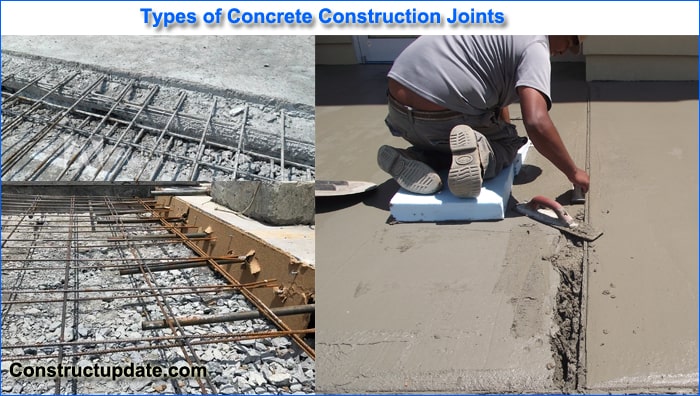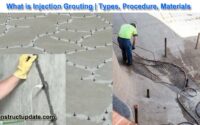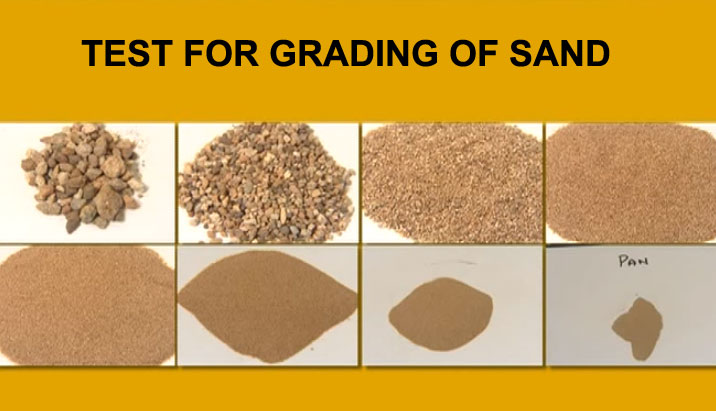What is Concrete Constructions Joints | Concrete Construction Joint Types
Concrete is not a ductile material since it cannot be bent or stretched without breaking. That is both its greatest asset and its greatest flaw. We utilise so much concrete in buildings because of its high compressive strength and hardness. Concrete does, however, move; it contracts and expands, and various components of a structure move in various ways. Here, concrete constructions joints become important.
Concrete has a construction joint that serves to keep it from cracking throughout the course of its lifespan. Concrete has the ability to expand and contract as a result of temperature variations, changing the volume of the material. Concrete cracking may be brought on by this shift in concrete volume. Construction joints are thus included in concrete to minimise cracking.
If the size or length of the concrete members exceeds a certain limit, a construction joint is required.
Construction joints are typically not needed for short-length concrete members because the end of the concrete is too close together for expansion and contraction. However, there is no terminus where this volume change can occur if the length of the concrete part has reached a certain threshold.

Concrete Constructions Joints Types
A. Construction Joints
B. Expansion Joints
C. Contraction Joints
D. Isolation Joints
A. Construction Joints
To specify the size of individual placements, construction joints are often positioned in a concrete slab in accordance with a predetermined joint plan. Construction joints must be created to transfer the flexural stresses that external loads cause in the slab while also allowing displacements between the slab’s two sides. Construction joints must be able to accommodate horizontal displacement that is caused by heat and shrinkage movement and that is perpendicular to the joint surface. They must also prevent displacements in the vertical or in the direction of rotation.
B. Expansion Joints:
These joints are present so that the concrete can expand if the temperature rises over the temperature during construction. Expansion joints allow the element to contract as well. In India, expansion joints are offered every 18 to 21 metres. This joint has an open space that ranges from 2 to 2.5 cm. Dowel bars may also be employed at appropriate intervals at these joints to transfer load from one slab to the adjacent slab in some cases.
C. Contraction joints
Contraction joints are designed to weaken concrete planes and control the areas where cracks can form as a result of dimensional changes. Concrete slabs have contraction/control joints installed to prevent random cracking.
Fresh concrete is a fluid, pliable mass that is easily shaped into almost any shape, but as the substance dries, there is a volume loss or shrinkage. Tensile stresses form within the concrete section when shrinkage is halted by contact with the supporting soils, granular fill, neighbouring structures, or the reinforcing. A zone with a smaller cross-section of concrete and less reinforcing is what makes up a contraction joint.
To make sure that the section is weak enough for a crack to form, the concrete cross section should be lowered by a minimum of 25%.
D. Isolation joints
Expansion or isolation To divide or isolate slabs from other construction components like walls, footings, or columns, as well as roads and patios from sidewalks, garage slabs, light poles, or other points of restraint, joints are supplied. Joints allow for unrestricted vertical and horizontal movement between neighbouring structural components, which helps to prevent cracking when these movements are allowed to occur.
At T- and asymmetrical junctions, ramps, bridges, building foundations, drainage inlets, manholes, and other locations where there may be differential movement between the pavement and a structure (or another existing pavement), an isolation joint is utilised to reduce compressive loads. To stop dirt and water infiltration, they are often filled with a joint filler substance.





